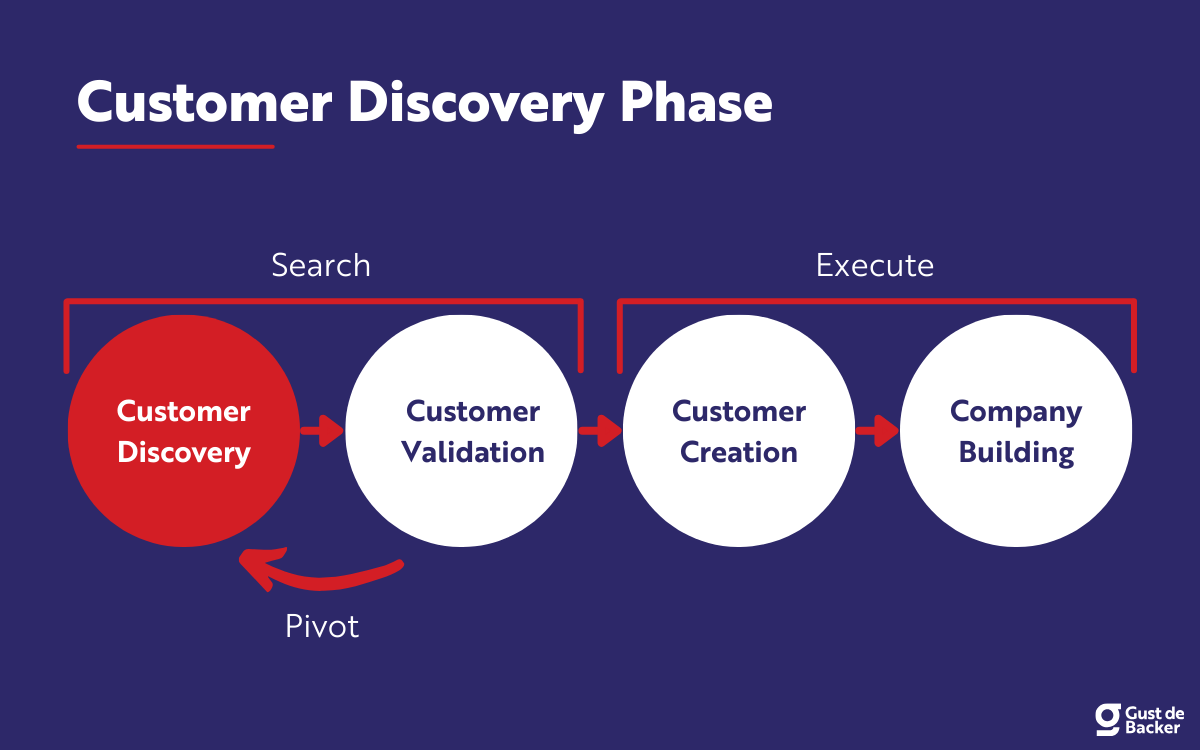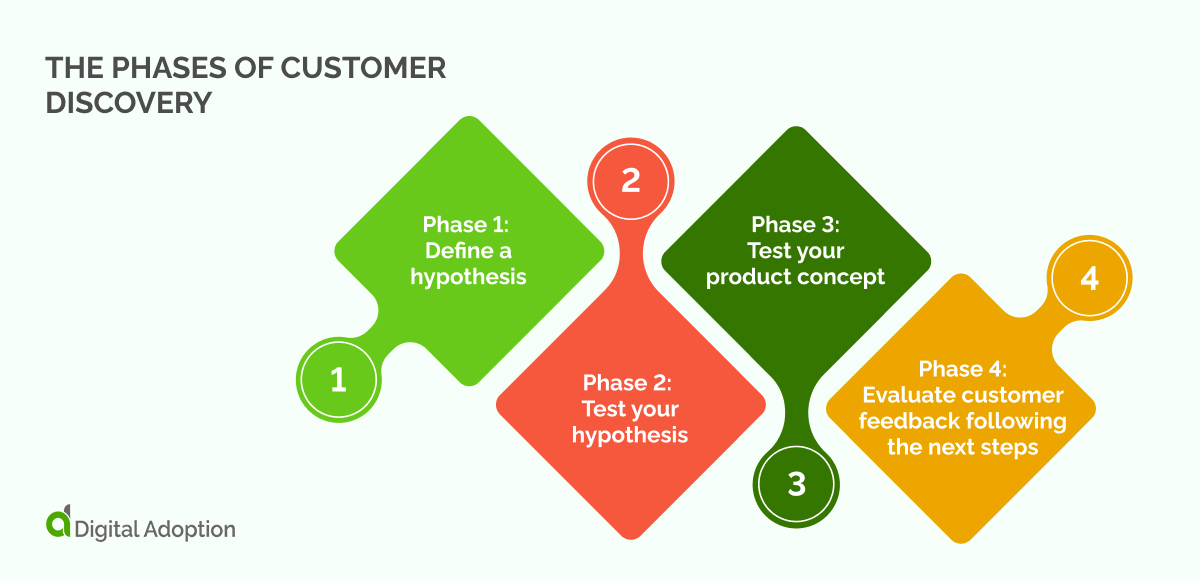Customer Discovery: Unlocking Insights to Drive Business Success
Understanding your customers is the cornerstone of building a successful business. Customer discovery is the process through which entrepreneurs identify customer needs, validate assumptions, and ultimately create products or services that resonate with their target audience. In this article, we will explore what customer discovery entails, its importance, and the key steps involved in this vital process.

What is Customer Discovery?
Customer discovery refers to the systematic approach of understanding your potential customers through research and direct interactions. It is an integral part of the Lean Startup methodology, which emphasizes the importance of validating ideas before investing substantial resources. By engaging directly with customers, businesses can gather critical insights that inform product development and marketing strategies.
The Importance of Customer Discovery
In today’s competitive landscape, the importance of customer discovery cannot be overstated. Here are several reasons why it is essential:
- Reducing Risk: Many startups fail because they build products that do not meet market needs. Customer discovery helps entrepreneurs minimize this risk by validating their ideas before launching.
-
Customer-Centric Innovation: Understanding customers’ problems and preferences fosters innovation. This approach allows businesses to create solutions that genuinely address customer needs.
-
Building Long-Term Relationships: When businesses demonstrate that they understand their customers, they foster trust and loyalty. This can lead to repeat business and referrals, which are crucial for long-term success.
Steps in the Customer Discovery Process
The customer discovery process consists of several key steps:
- Identifying Target Customers:
- Begin by defining your ideal customer profiles. Who are they? What are their demographics, behaviors, and pain points? Utilize tools such as Google Analytics to gather demographic data about your website visitors.
- Creating Hypotheses:
- Formulate assumptions about your customers’ needs and problems. These hypotheses will guide your research and interviews.
- Conducting Interviews and Surveys:
- Engage with potential customers through interviews and surveys. Ask open-ended questions to gain deeper insights into their needs and challenges. SurveyMonkey is a great tool to help you create effective surveys.
- Analyzing Data:
- Once you have gathered data, analyze it to identify patterns and insights. What common needs or problems emerge? Tools like Tableau can help you visualize data for better understanding.
- Iterating Based on Feedback:
- Based on the insights you’ve gathered, refine your product or service. This iterative process is crucial in aligning your offerings with customer needs.

Techniques for Effective Customer Discovery
To maximize the effectiveness of your customer discovery efforts, consider employing the following techniques:
- Surveys and Questionnaires: Create targeted surveys that focus on specific aspects of your product or service. Ask questions about customer preferences, pain points, and willingness to pay.
-
In-Person Interviews: Face-to-face interactions often yield richer insights than online surveys. This method allows for follow-up questions and a deeper understanding of customer emotions.
-
Focus Groups: Organizing focus groups can help gather feedback from multiple customers at once. This technique encourages discussion and may reveal insights that individual interviews might miss.
-
Observation: Sometimes, the best insights come from simply watching customers interact with your product or similar products. This approach allows you to identify pain points that customers may not articulate in interviews.
Common Challenges in Customer Discovery and How to Overcome Them
While the customer discovery process is invaluable, it can come with challenges:
- Bias in Data Collection: Be aware of personal biases when interpreting customer feedback. Utilize multiple sources of data to validate your findings.
-
Difficulty in Reaching Customers: Engaging customers can be challenging, especially in niche markets. Use social media and networking events to broaden your reach.
-
Interpreting Feedback: Understanding what customers truly mean can be difficult. Clarifying questions during interviews can help ensure you interpret feedback correctly.

Tools and Resources for Customer Discovery
Leveraging the right tools can enhance your customer discovery process:
- Survey Tools: Tools like Typeform and Google Forms make it easy to create engaging surveys.
-
CRM Software: Customer Relationship Management (CRM) systems like HubSpot can help you track customer interactions and feedback efficiently.
-
Analytics Tools: Platforms like Hotjar can provide insights into user behavior on your website.
-
Books and Courses: Consider reading resources like The Lean Startup by Eric Ries or taking online courses on platforms like Coursera to deepen your understanding of customer discovery.
Real-World Examples of Successful Customer Discovery
Many successful companies attribute their growth to effective customer discovery practices. Here are a couple of noteworthy examples:
- Airbnb: Initially, Airbnb struggled to attract users. By conducting extensive interviews with both hosts and guests, they refined their platform and marketing strategy, resulting in a significant increase in user adoption.
-
Dropbox: Dropbox’s founder, Drew Houston, utilized customer discovery techniques by creating a simple explainer video that captured the essence of the product. This approach allowed them to validate the demand before fully developing the product.
Frequently Asked Questions (FAQs)
What is the difference between customer discovery and customer validation?
Customer discovery focuses on understanding customer needs and problems, while customer validation tests the product or solution against those needs to ensure market fit.
How often should I conduct customer discovery?
Customer discovery is an ongoing process. Regularly engage with your customers to stay updated on their changing needs and preferences.
What if customers are not forthcoming with feedback?
If customers are reluctant to share their thoughts, consider incentivizing feedback through discounts or rewards. Building rapport can also encourage more open communication.
In the next section of this article, we will explore the future of customer discovery and its impact on business growth. Stay tuned for more insights!
The Future of Customer Discovery
As businesses continue to evolve, the customer discovery process will also adapt. Here are some trends and technologies that will shape the future of customer discovery:
1. Increased Use of AI and Machine Learning
Artificial intelligence (AI) and machine learning will play a crucial role in analyzing customer data. These technologies can help identify patterns and insights at scale, making the customer discovery process more efficient. Tools like IBM Watson are already being used to gather and analyze customer feedback, enabling businesses to understand their audiences better.
2. Enhanced Data Privacy Measures
With growing concerns over data privacy, businesses must prioritize transparency and ethics in customer interactions. Implementing robust data protection measures will not only comply with regulations but also build trust with customers. Understanding privacy concerns during the discovery process will help businesses tailor their approaches.
3. Remote and Hybrid Interactions
The shift towards remote and hybrid working models means that customer interactions will increasingly happen online. Businesses should leverage virtual tools for interviews, surveys, and focus groups. Platforms like Zoom and Miro can facilitate meaningful interactions in a digital format.
4. Greater Emphasis on Customer-Centricity
As competition increases, businesses will need to adopt a customer-centric approach. This means not just gathering feedback but actively engaging customers in the product development process. Incorporating customer insights into every stage of business strategy will become the norm, driving innovation and loyalty.
5. Real-Time Feedback Loops
Technological advancements will enable businesses to gather real-time feedback from customers. This immediacy will allow companies to adapt their offerings swiftly in response to changing customer needs. Implementing tools like Qualtrics can help businesses monitor customer sentiments continuously.
Best Practices for Implementing Customer Discovery
To effectively implement customer discovery in your organization, consider the following best practices:
Create a Customer-Centric Culture
- Encourage Collaboration: Foster an environment where teams can share customer insights. This can lead to innovative solutions that address real customer needs.
-
Involve Everyone: From marketing to product development, everyone in the organization should understand the importance of customer discovery and be involved in the process.
Set Clear Objectives
-
Define Goals: Before starting the customer discovery process, outline clear objectives. What specific insights are you looking to gain? This focus will help you design effective research strategies.
-
Measure Success: Develop key performance indicators (KPIs) to assess the effectiveness of your customer discovery efforts. This can include metrics like customer satisfaction scores and retention rates.
Stay Flexible and Adaptable
-
Iterate Quickly: The customer discovery process is not linear. Be prepared to pivot based on feedback and emerging trends.
-
Embrace Change: The market landscape is constantly evolving. Stay informed about industry changes and be willing to adapt your strategies accordingly.

Conclusion
In conclusion, customer discovery is an essential process for any entrepreneur or business looking to thrive in today’s competitive environment. By understanding your customers’ needs, you can build products and services that resonate with them, reduce risk, and foster long-term relationships.
As you embark on your customer discovery journey, remember to be open, inquisitive, and responsive. With the right approach and tools, you can unlock valuable insights that propel your business forward.
Frequently Asked Questions (FAQs)
How can I get started with customer discovery?
To start, define your target audience and formulate hypotheses about their needs. Engage with them through interviews and surveys to validate or refine your ideas.
What tools can assist with customer discovery?
Utilize tools like SurveyMonkey for surveys, Hotjar for user behavior analytics, and CRM systems to manage customer relationships.
Is customer discovery only for startups?
No, established businesses can also benefit from customer discovery. Regularly engaging with customers helps companies stay relevant and responsive to changing needs.
How often should I conduct customer discovery?
Customer discovery should be an ongoing process. Regular interactions with customers will help you stay attuned to their evolving preferences and challenges.
By following the guidelines laid out in this article, you will be well-equipped to embark on a successful customer discovery journey. Stay curious, and let your customers guide you toward success!

